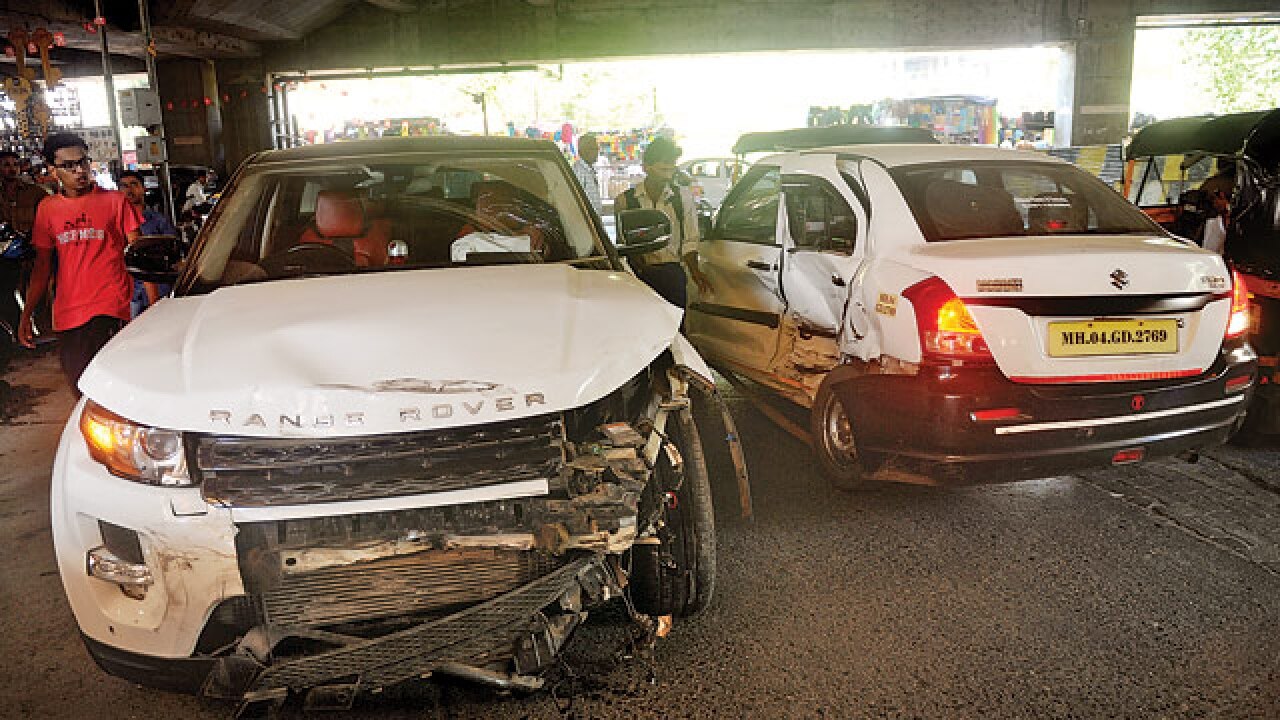
Last week on the Greater Noida Expressway, a Lamborghini swerved suddenly to crash into an EECO van, killing the latter’s driver; the abrupt lane-change was apparently due to a Maruti Swift changing lanes in front of the Lamborghini. By chance, the scene was captured by a CCTV, which showed the Swift driver changing lanes without signalling. True to form, the Lamborghini driver disappeared. The initial police thesis was that the Swift was overtaking the Lamborghini — much like a lame man is prone to attempt to overtake Usain Bolt! Without commenting on this incident, how often do the newspapers report the crash of a Mercedes or BMW or Aston Martin; and the driver vanishes, presumably to give him time to ‘settle’ the processes of police investigation and ensure that the inquiry proceeds in the ‘right’ direction. An econometric regression may well find a significant correlation between accidents involving luxury cars and quality of investigation/trial period — illustrated by Salman Khan’s hit-and-run case, where a brand new driver emerged from nowhere after a decade, or a BMW driver Nanda being let off with a ‘large fine’!
Do we need racing cars, the Lamborghinis and the Maseratis on our roads? Our roads, even the so-called highways, expressways, and toll roads, are not the Autobahn — one finds a not-so-peaceful coexistence between a farmer crossing the roadway to reach his farm (as if he owns the road but not his life); motor bikes travelling at speed the wrong way to avoid the trouble of going to the next U-turn; and tractors entering at high speed from the village dirt track to merge with the main traffic, undecided about proceeding with or against the traffic — even without high-voltage cars, our roads are unsafe. Per road mile, India has the highest road-death ratio in the world; roads account for more deaths than terrorism, naxalism, and natural disasters.
India is also one of the poorest countries in the world — its income differential ratios are appalling and sharply rising. Such terrible contrasts could be tolerated, if not accepted, if the poor had minimum living standards; surely the ground reality is that probably 50 per cent of Indians live in abysmal living conditions in abject poverty. Every poor person can now see how the rich live in India — is this conducive for the medium/long-term stability of our democracy. Is this income differential conscionable? Is there a moral justification in such a poor country that we freely permit, indeed encourage, the Audis and Jaguars?
The GST is surely a great economic forward step. It has the potential to transform, in due course, our society and economy. However, Lamborghinis and similar cars carry a 28-per cent GST rate — indeed, the large car has become cheaper since July 1! In a country like Singapore, presumably ‘backward’ and ‘uncivilised’, cars need to be registered based on the carrying capacity of roads — thus the equivalent of the Maruti Swift would cost perhaps Rs 1 crore on the road, probably less than what the Maserati probably costs in India. Out of 125 crore Indians, only 1.5 per cent pay tax — while lakhs of billionaires own Audis and Toyota Innovas. Go to any upper-crust colony in Delhi or Mumbai, and you will see more Mercedes cars or BMWs than the Maruti 800s or Tata Indicas. Note that the size and horsepower of his car is the status symbol of the ‘successful’ Indian — alas, public policy permits this vulgar display of wealth in this ‘free’ country, where the individual has the freedom to die of poverty. Surely by any sensible reckoning, the GST should carry a 500-per cent slab for extra-luxury items like Lamborghinis; likewise, a slab of say 200 per cent for the SUVs and the like. Such a dispensation would create a corpus of funds for investment in public transport, as also in say, cycle-tracks as an alternative mode of transport — the public savings in health care alone will justify such a move.
Delhi has now become the most polluted city in the world, beating Beijing for this honour. There are new competitors now in cities like Lucknow, Allahabad, and Mumbai. Everybody knows the problem is there. No authority will own responsibility to handle it; not the Ministry of Environment, nor the Delhi government, not the municipal corporations, nor the Petroleum/Industries Ministries. The Finance Ministry, which fixes the tax rates, is not concerned with pollution — it is not their problem. Indeed, it is the problem of every citizen, but not of the government. While vehicle population increases by 6 per cent, additional road capacity annually is only ½ per cent — so is it only a question of time before gridlock day? How many people will get lung/heart/other diseases? The linkages of the above issues are not seen — no ‘white paper’ and a medium-term plan to address these appear to have been prepared — the issue presumably will go away by itself.
The author is a former cabinet secretary. Views expressed are personal.